50 Ways Parenting Has Changed in the Last 50 Years
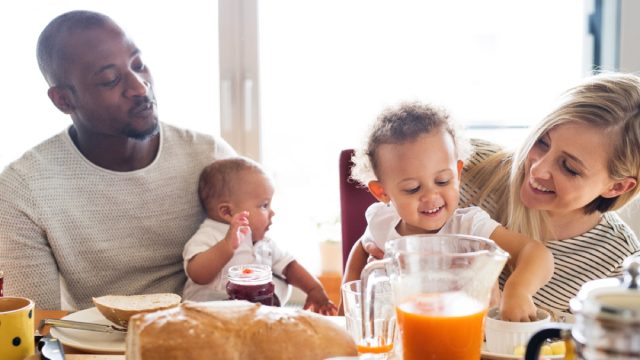
For the past 50 years, parents have been saddled with many of the same struggles. Whether you’ve raised kids in the 21st century or you reared your brood back in the 1950s and ’60s, it’s likely that you’ve frantically called a last-minute babysitter so you could rush one kid to the doctor, tackled a papier-mâché solar system diorama the night before it was due, and hoped against hope your kid didn’t wreck the car when he took it for his first solo spin.
However, in other ways, modern parenting is practically unrecognizable—both for better and for worse. While today’s parents can find out medically necessary information about their babies before they’re born and have digital distractions that allow them to shower in peace, they’re also up against huge increases in the cost of living and the ever-looming threat of what’s lurking on the internet. Read on to discover 50 ways parenting has changed in the past 50 years.
1
More households are now childless.

Fifty years ago, the majority of married couples had children, but that doesn’t hold true today. Per one 2011 report from the Organisation for Economic Co-operation and Development, “changing family structures, lower fertility rates and ageing [sic] populations have led to a growing share of households without children.” In fact, according to the 2018 American Family Survey from Desert News, only 40 percent of men and 33 percent of women said that having children was essential to living a fulfilling life.
2
More parents are unmarried but living together.
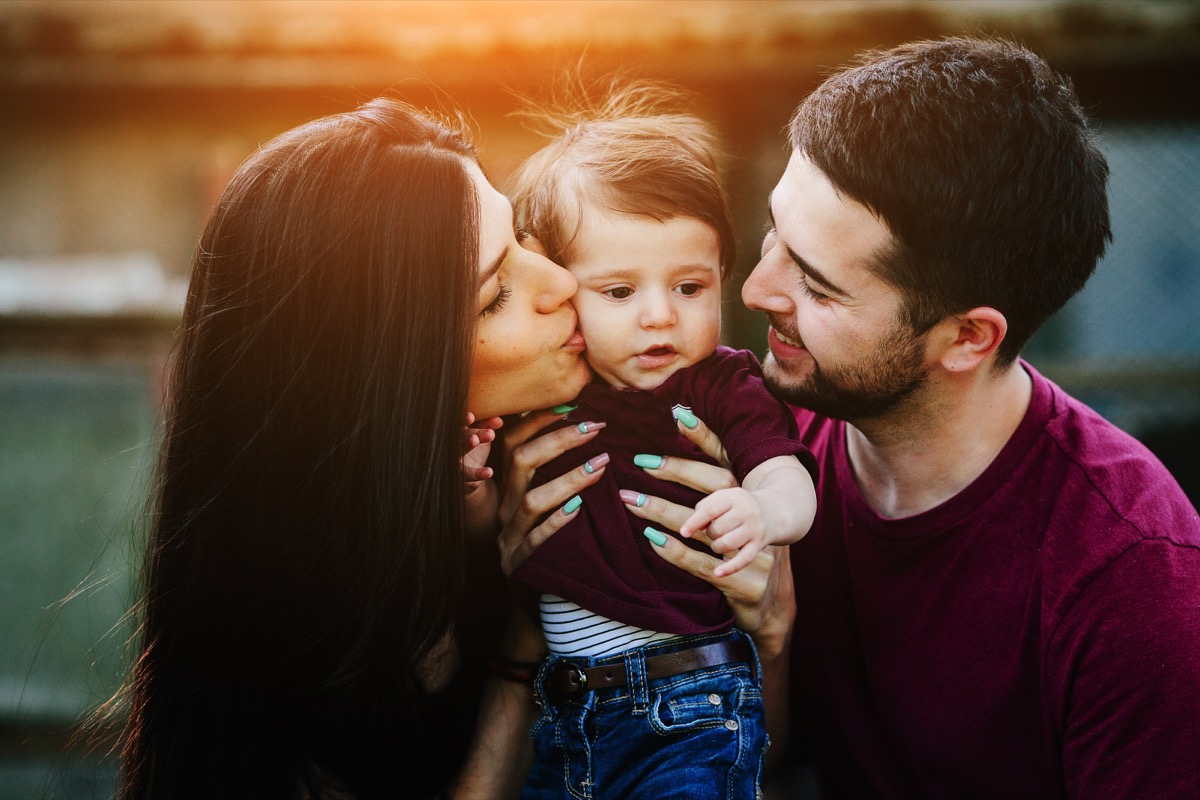
For couples who do see kids in their future, getting married isn’t the prerequisite it once was. According to a 2018 report from the Pew Research Center, just 7 percent of parents in 1968 were unmarried, but living together. In 1997, that statistic was up to 20 percent, and by 2017, 35 percent of unmarried parents were cohabiting.
3
And more kids are being raised by single parents.
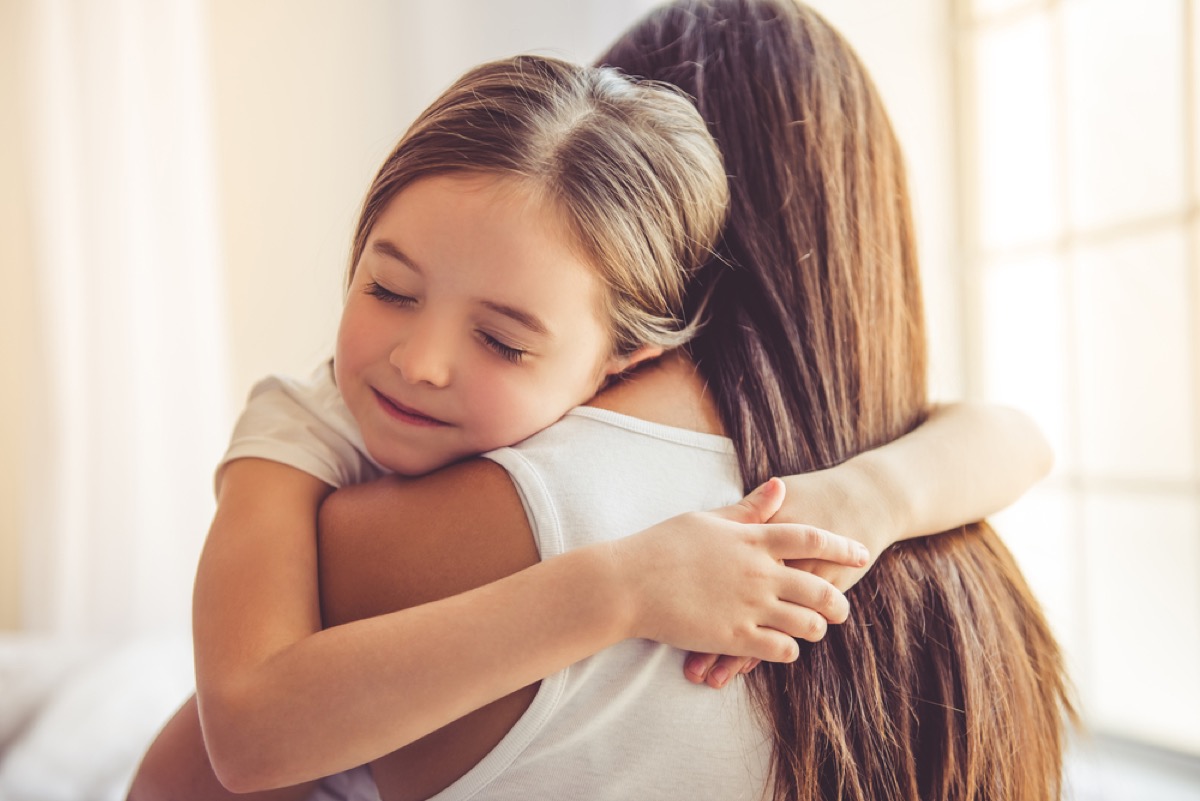
With advances in reproductive technology making it easier to have a baby without a partner, today there are more kids being raised by a single parent than ever before. The Pew Research Center reports that in 1960, just 9 percent of kids were raised by a single parent. By 2013, that number had jumped to 34 percent.
4
Expectant women are now encouraged not to smoke or be around smokers.

It seems pretty obvious to us now that pregnant women shouldn’t smoke or be exposed to secondhand smoke. However, that didn’t go without saying in the 1960s. In fact, in 1966, leading medical textbook Williams Obstetrics (as quoted in Laury Oaks’ Smoking and Pregnancy: The Politics of Fetal Protection) claimed that “10 cigarettes or fewer per day during pregnancy are quite likely innocuous.” Yikes!
5
New parents have video monitors to watch their kids.
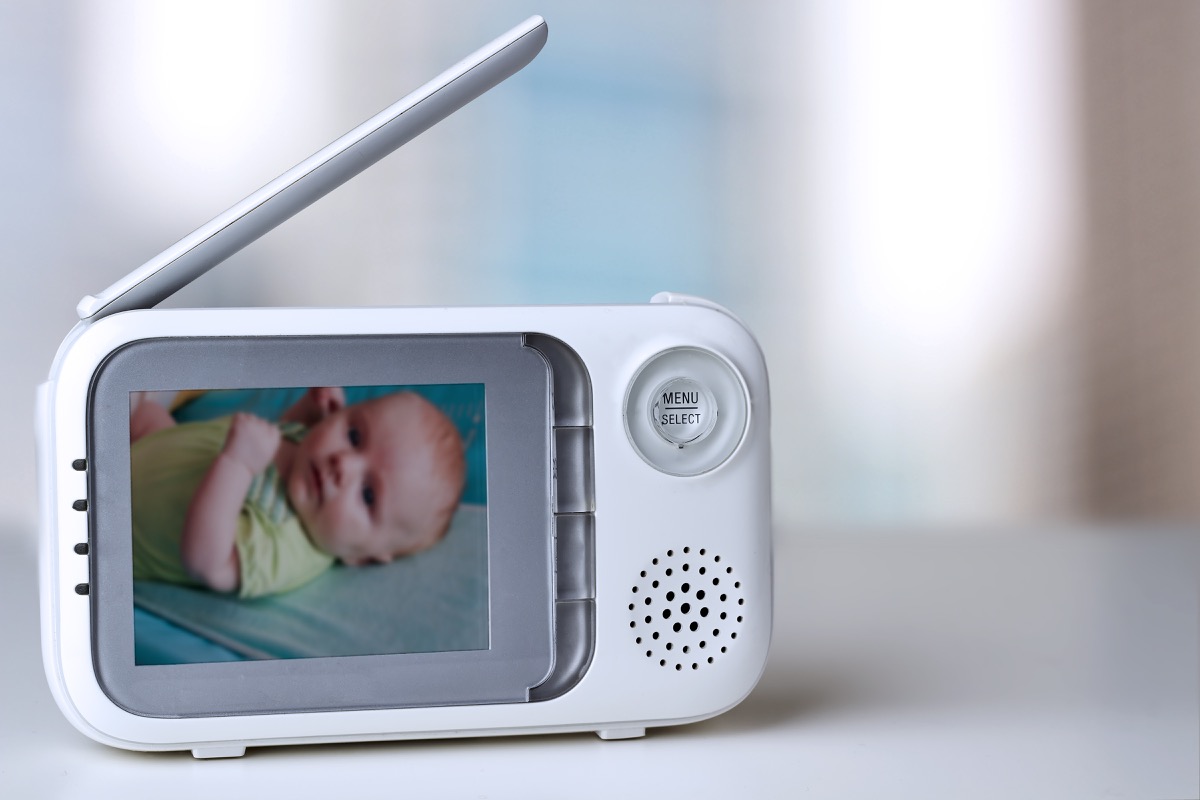
While baby monitors have been around since 1937, when the Zenith Radio Nurse first hit the market in the U.S., today’s parents have much more advanced options for keeping an eye on their little ones. In addition to traditional audio monitors, parents can now buy video monitors that track their kids’ motion and the temperature in their bedrooms, as well as specialty monitoring devices like the Owlet that measure a baby’s respiration and heart rate as they sleep.
6
At-home pregnancy tests are widely available.

Nowadays, all you have to do is head to any pharmacy or grocery store and buy a pregnancy test for just a few dollars. But parents 50 years ago weren’t afforded such a convenience. It wasn’t until the mid-1970s that the first hCG-based home pregnancy kits came out.
7
There are more ways to diagnose health issues before birth—and they’re less invasive than ever.
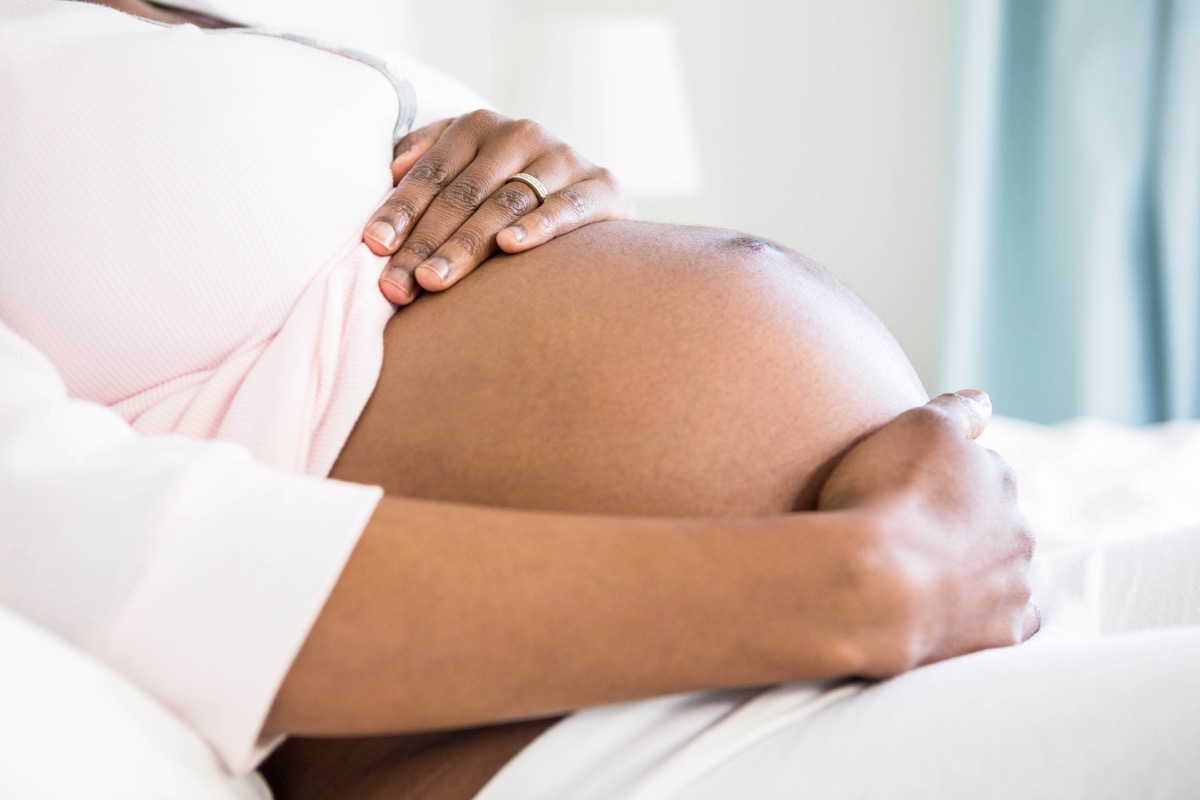
Fetal ultrasounds have made it easier than ever for parents-to-be to discover health issues with their baby before it’s born and prepare accordingly. While ultrasound technology has been used during pregnancy since the 1950s, Malcolm Nicolson and John E. E. Fleming noted in their book Imaging and Imagining the Fetus: The Development of Obstetric Ultrasound that it wasn’t until the 1970s that it was a regular part of prenatal care. Today, the majority of women get two ultrasounds during their pregnancy, according to Beth Israel Deaconess Medical Center.
8
Parents can now tell the sex of their baby prior to birth.

With advancements in ultrasound technology, determining the sex of a baby in utero is easier than ever. However, according to OB-GYN Dr. Joseph Woo’s “A Short History of the Development of Ultrasound in Obstetrics and Gynecology,” it wasn’t until the 1990s that 20-week ultrasounds—when sex determination is typically the most accurate—became a routine part of prenatal care.
9
Gender reveals have become a major trend.

In the 1960s, folks didn’t celebrate the impending arrival of a baby the way we do today. There were no cakes filled with blue M&Ms, no cannons shooting off pink smoke, and no skywriting. In fact, according to a 2017 article published in the Journal of Gender Studies, it wasn’t until 2008 that the first gender reveal party video was added to YouTube.
10
And children’s clothing has become more gender-specific.
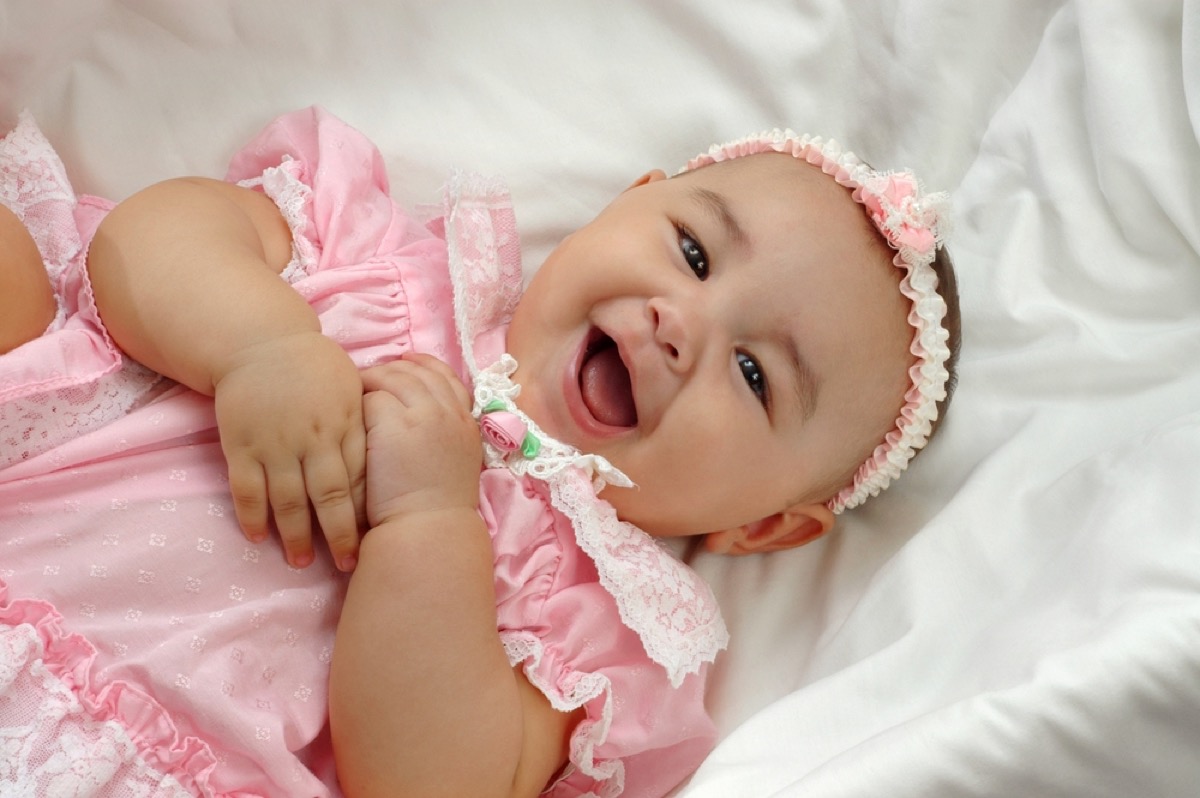
Thanks to the unisex clothing trend of the 1970s and the lack of sex determinations before birth, kids were frequently dressed in yellows, greens, and grays half a century ago. However, there’s more distinctly gendered clothing in the mainstream today; nowadays, it’s fairly obvious which clothing section is for girls and which is for boys based on the amount of pink present (or the lack thereof).
11
Parents are increasingly using gender-neutral names.
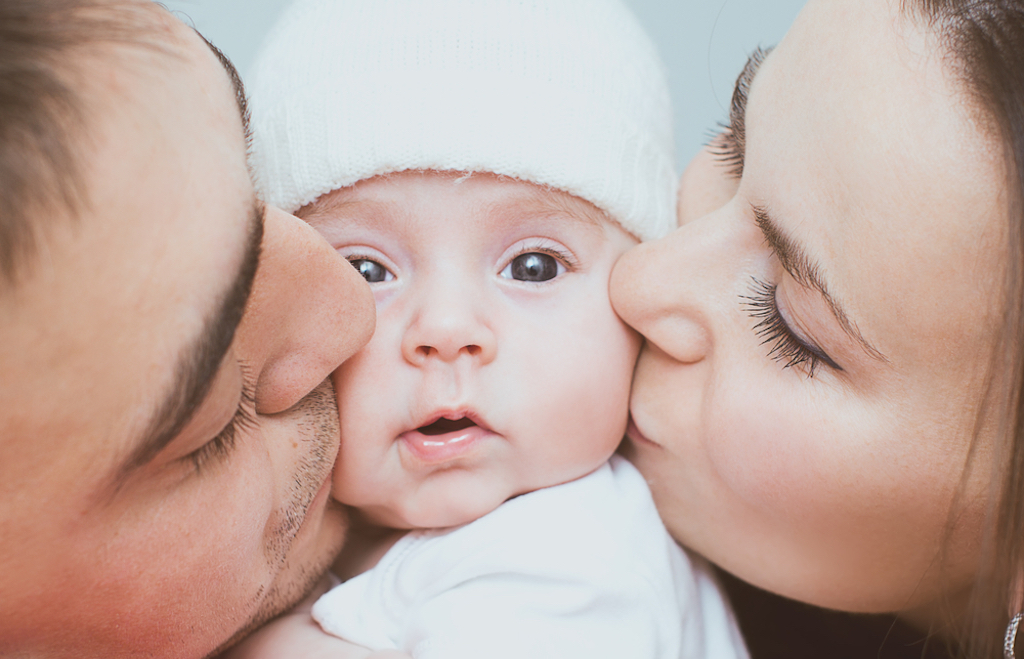
Parents are giving their kids gender-neutral names now more than ever, despite all those gender reveal parties and videos. Thirteen gender-neutral names—including Harper, Riley, Peyton, Taylor, Bailey, and Morgan—were among the top 100 girls’ names from 2010 to 2017, according to the Social Security Administration. In the 1960s, the only gender-neutral names that cracked the top 100 for both boys and girls were Tracy, Kim, and Dana.
12
And they’re choosing less-popular names for their children in general.
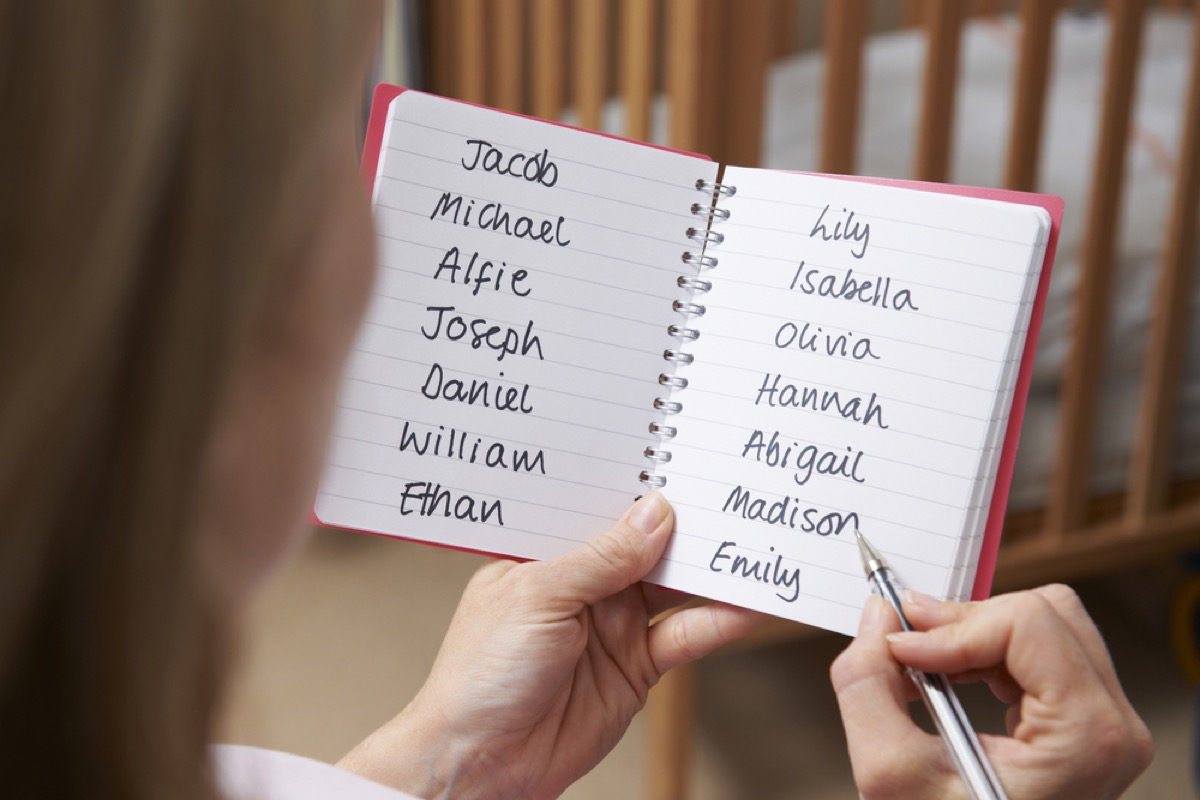
If North West and Blue Ivy are any indication, then there’s a bigger push than ever to choose a “creative” name for your kid. According to one 2010 study published in Social Psychological and Personality Science, more than 60 percent of American boys and nearly 50 percent of girls had a name in the top 50 most popular names in the early ’60s. In 2007, those numbers had dropped to just over 30 percent and just over 20 percent, respectively.
13
Same-sex adoption is significantly more common today.
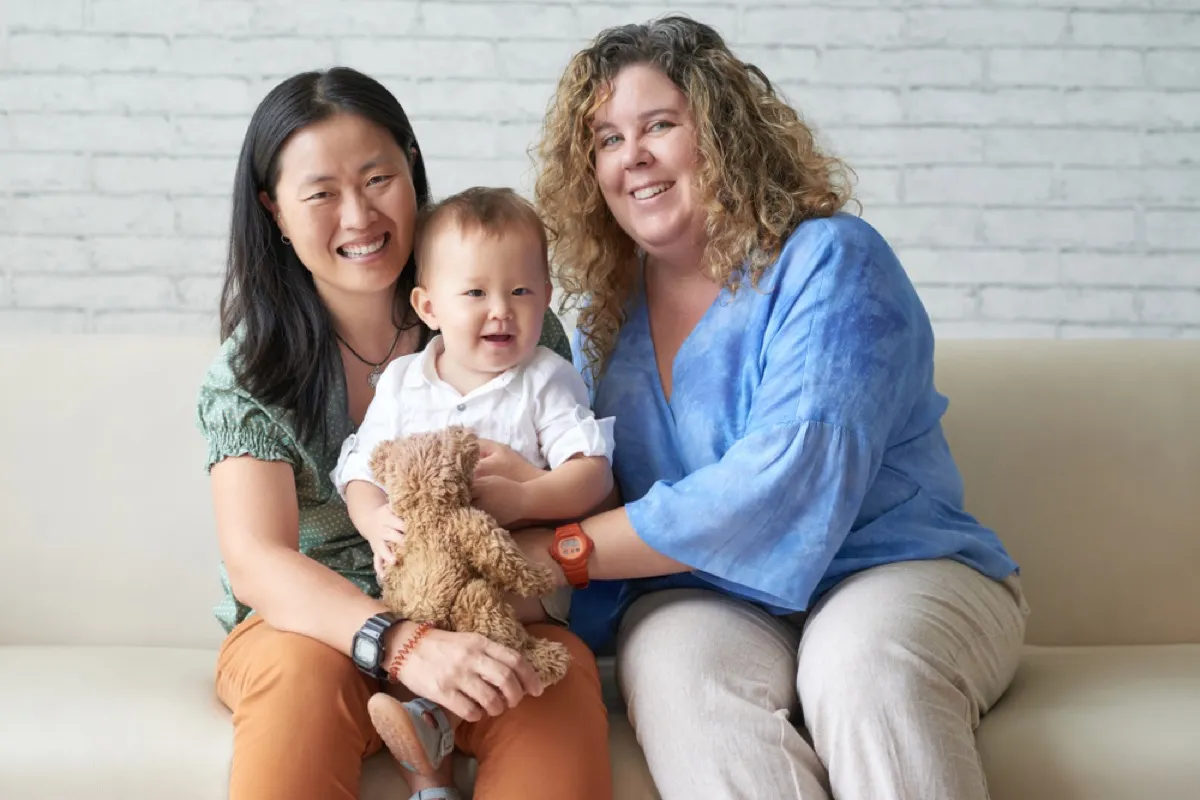
While LGBTQIA+ couples still have an uphill battle when it comes to parenting rights, same-sex adoption—something that was practically unheard of in the 1960s—has become significantly more common in the intervening decades. However, that’s a relatively recent trend—it was only 1997 when New Jersey became the first state in the U.S. to allow same-sex couples to jointly adopt a child.
14
More parents breastfeed today.
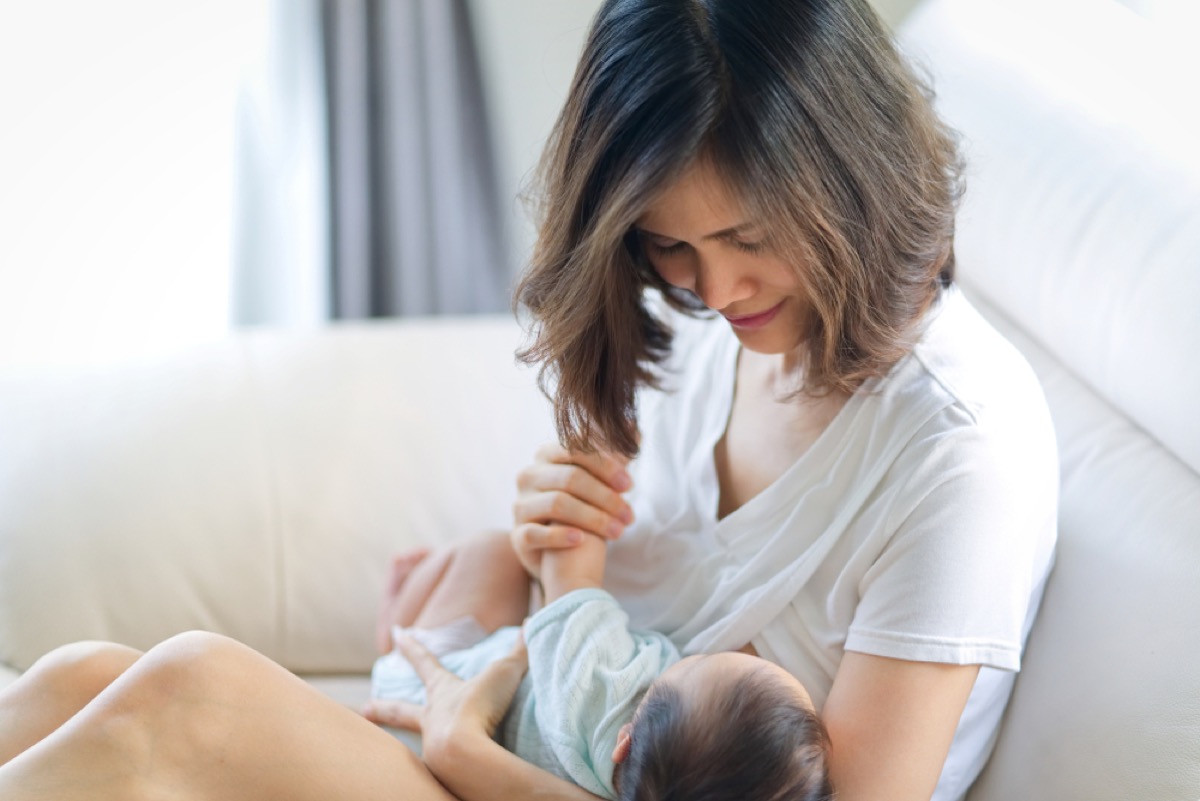
According to The Surgeon General’s Call to Action to Support Breastfeeding, rates of breastfeeding have gone up significantly over the past half-century. While just over 20 percent of mothers ever breastfed in 1970, that number was nearing 80 percent by 2007, according to the Centers for Disease Control and Prevention (CDC).
15
And formula-feeding parents have more nutritionally-sound advice to follow.
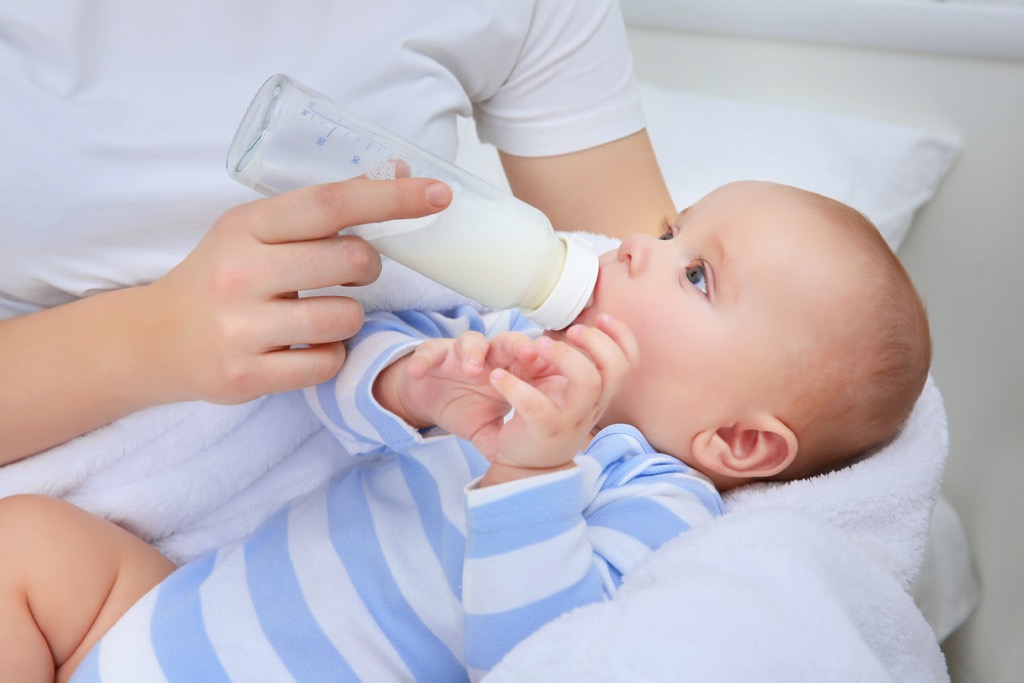
Baby formula today is a highly regulated product, and it’s getting ever-closer to the nutritional profile of breastmilk. However, parents in the first half of the 20th century didn’t have such nutritious offerings. In one recommendation published in 1945, parents were instructed to feed their children a mixture of sugar water and milk. Seriously.
16
Babies are given solid food later.
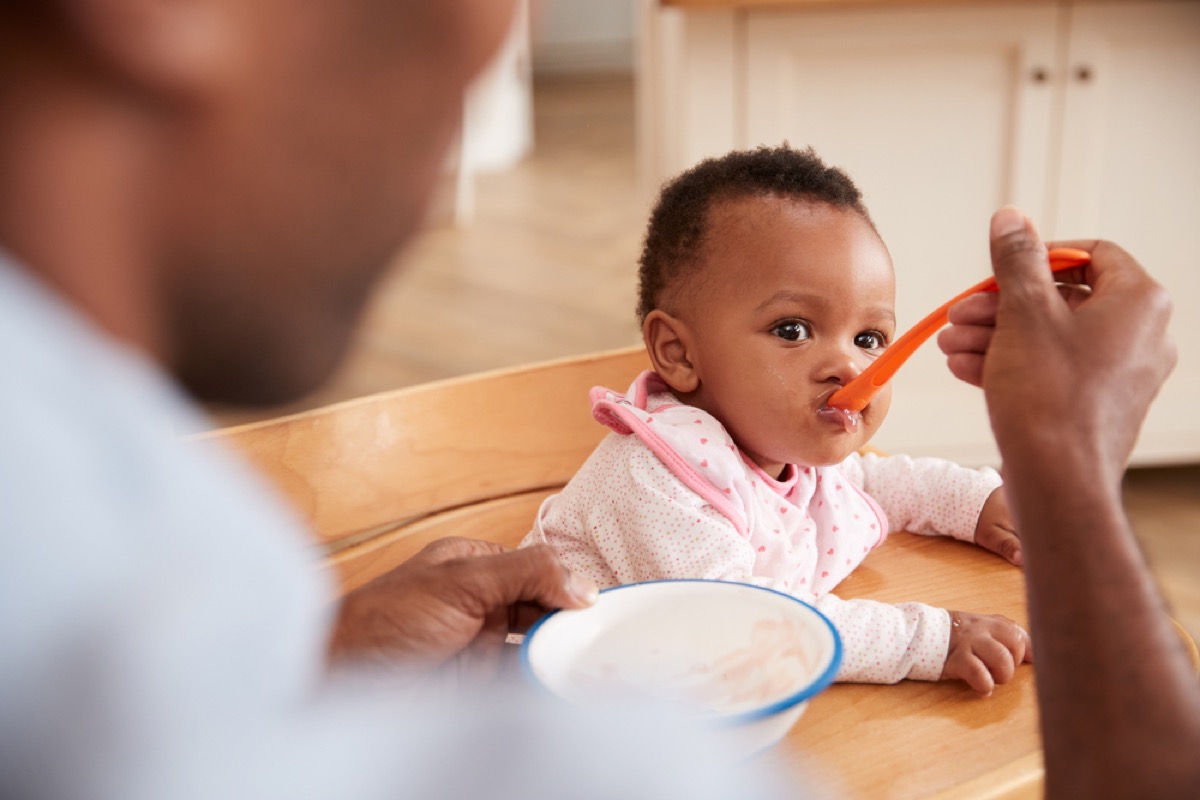
While most pediatricians recommend waiting to feed babies anything other than breastmilk or formula until they’re six months old, that wasn’t the advice half a century ago. Not only was the general recommendation some 50 years ago to start feeding a baby solid foods after just four months, but according to Dr. Walter W. Sackett’s 1962 book Bringing Up Babies: A Family Doctor’s Practical Approach to Child Care, tykes in the ’60s could evidently eat cereal at two to three days old, strained vegetables by 10 days, fruit juice at three weeks, and bacon and eggs by nine weeks. That sounds truly crazy to any parent today!
17
Parents use more disposable diapers.

Though disposable diapers were available 50 years ago, they didn’t become popular until more recently. According to a report by Mother Jones, disposable diapers made up just 0.3 percent of municipal waste in the United States in 1970. As of 2006, that number had reached 2.6 percent.
18
There are more stay-at-home dads today.
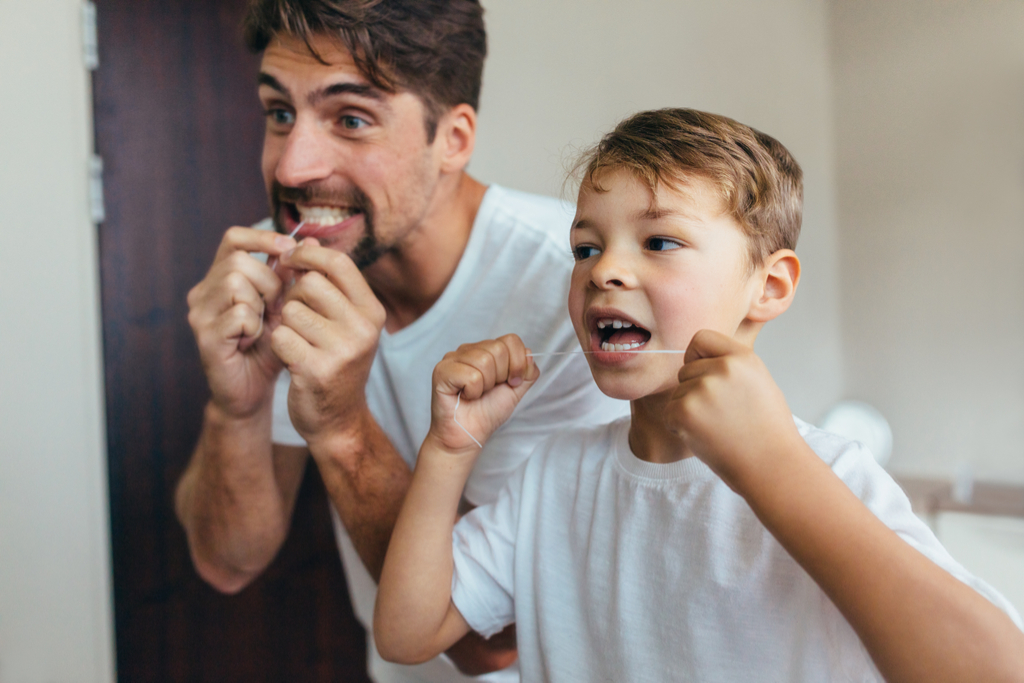
While a working dad and stay-at-home mom were the norm back in the 1960s, that family dynamic has significantly shifted in the years since. According to the Pew Research Center, in 2017, about 7 percent of dads were stay at home parents. In 1989, that number was just 4 percent—and in the 1960s, it was practically unheard of.
19
More moms are in the workforce.

Today, moms make up more of the workforce than ever before. The Pew Research Center notes that in 1975, just 47 percent of moms with a kid under 18 worked outside the home. In 2014, that number reached 70 percent, according to the U.S. Bureau of Labor Statistics.
20
There are more families with two parents working.

With the rising costs of everything from housing to child care, having two working parents is more of a necessity than ever. As of 2015, 46 percent of U.S. households with children had two working parents, according to the Pew Research Center. In 1970, that number was just 31 percent.
21
And parents spend more time at work.

Unfortunately for parents, those hours at the office are getting longer. A 2014 survey from Gallup found that the average American workweek has ballooned to 47 hours.
22
Today’s strollers typically face inward.
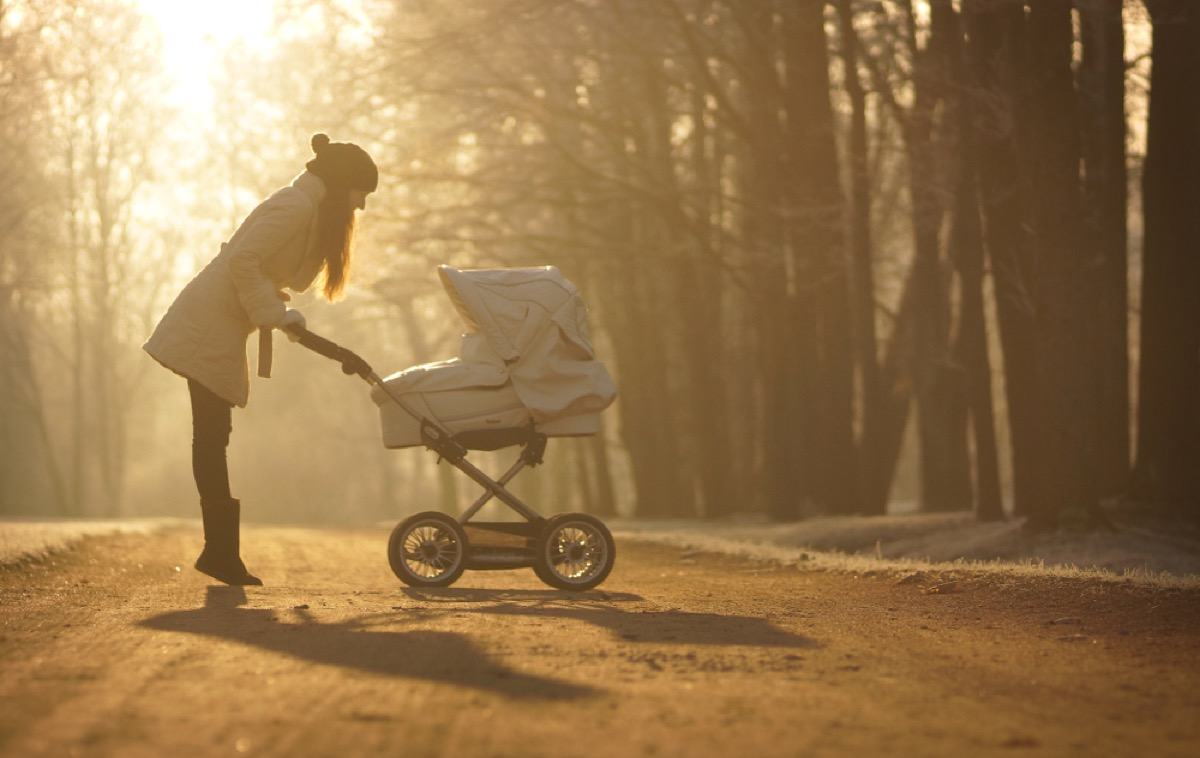
As recently as the 1980s, the standard stroller had a baby facing away from his or her caregiver, according to a review of baby strollers published in the journal Cogent Engineering in 2017. However, most strollers today are designed for infants and toddlers to face the parent, and with good reason: A 2008 study conducted at the University of Dundee found that parents were more likely to talk to their babies if they were facing them.
“If babies are spending significant amounts of time in a baby buggy that undermines their ability to communicate easily with their parent, at an age when the brain is developing more than it will ever again in life,” the study’s lead author, Dr. Suzanne Zeedyk, said in a press release. “This has to impact negatively on their development.”
23
And they’re a status symbol.
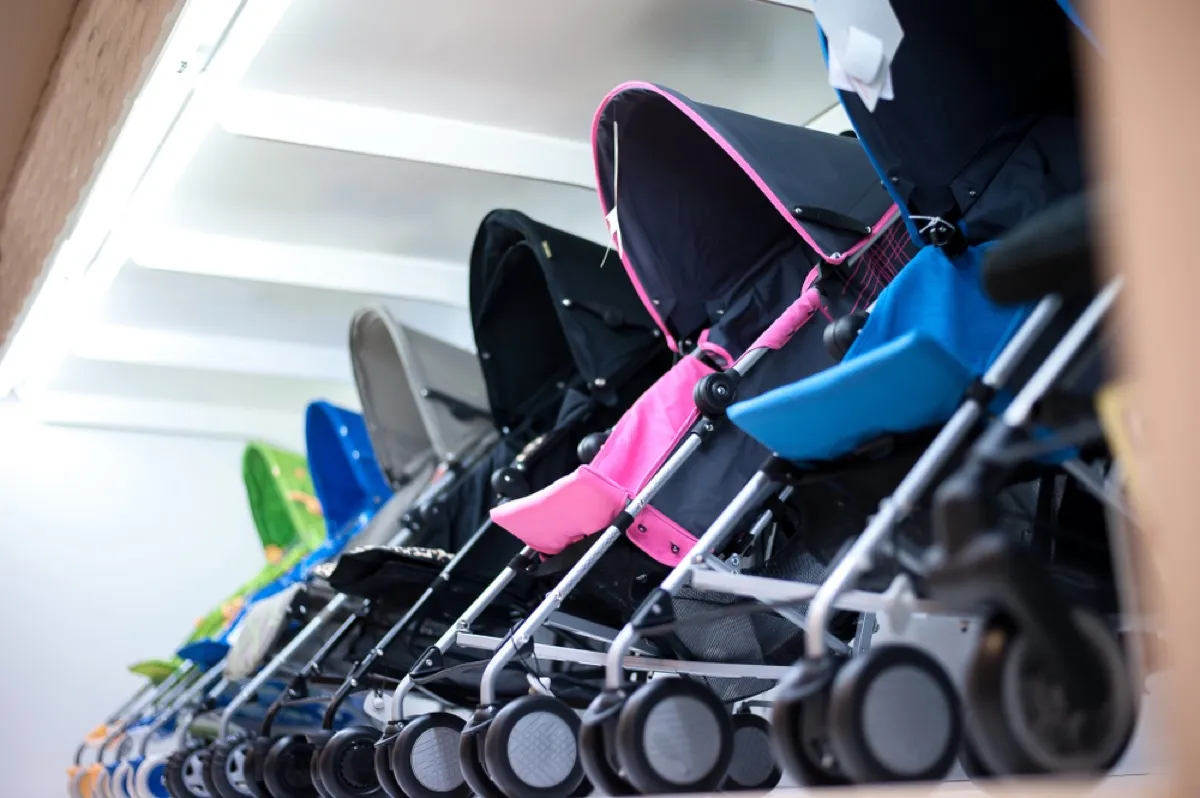
While strollers have never been cheap, per se, it wasn’t until recently that parents were shelling out a month’s rent—or more—to purchase one. In 2011, for instance, Bugaboo introduced their Donkey stroller, a model that retailed for a cool $1,500 at the time. And today, a three-piece CYBEX by Jeremy Scott travel system currently costs upwards of $3,100.
24
Parents put their babies on their backs to sleep.
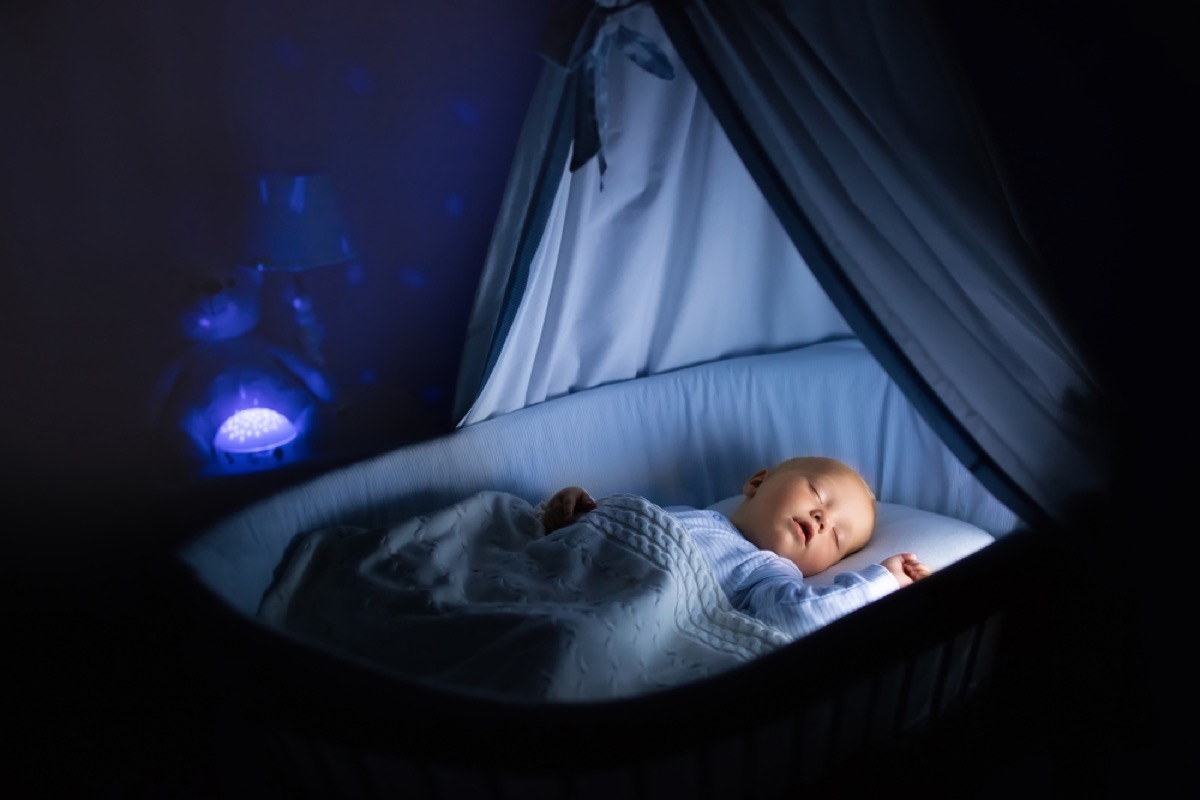
In the early part of the 20th century, it was believed that putting babies on their stomachs would keep them safe. The idea was that if the baby were to vomit in the night, they would be less likely to aspirate. However, since the American Academy of Pediatrics announced their “Back to Sleep” campaign in 1994—which encouraged parents to put their kids to sleep on their backs—Sudden Infant Death Syndrome (SIDS) rates have decreased by nearly 50 percent. As a result of these promising numbers, putting a baby on their back to sleep is the current go-to method.
25
Kids typically sit in the back seat today.

In the 1960s, kids were frequent passengers in the front seat, right next to mom and dad. Today, however, it’s recommended that kids under 13 sit in the back seat with their seat belts securely fastened. This change started to happen around 1984, when New York passed the first law requiring the use of seatbelts.
26
Car seats are mandatory now.
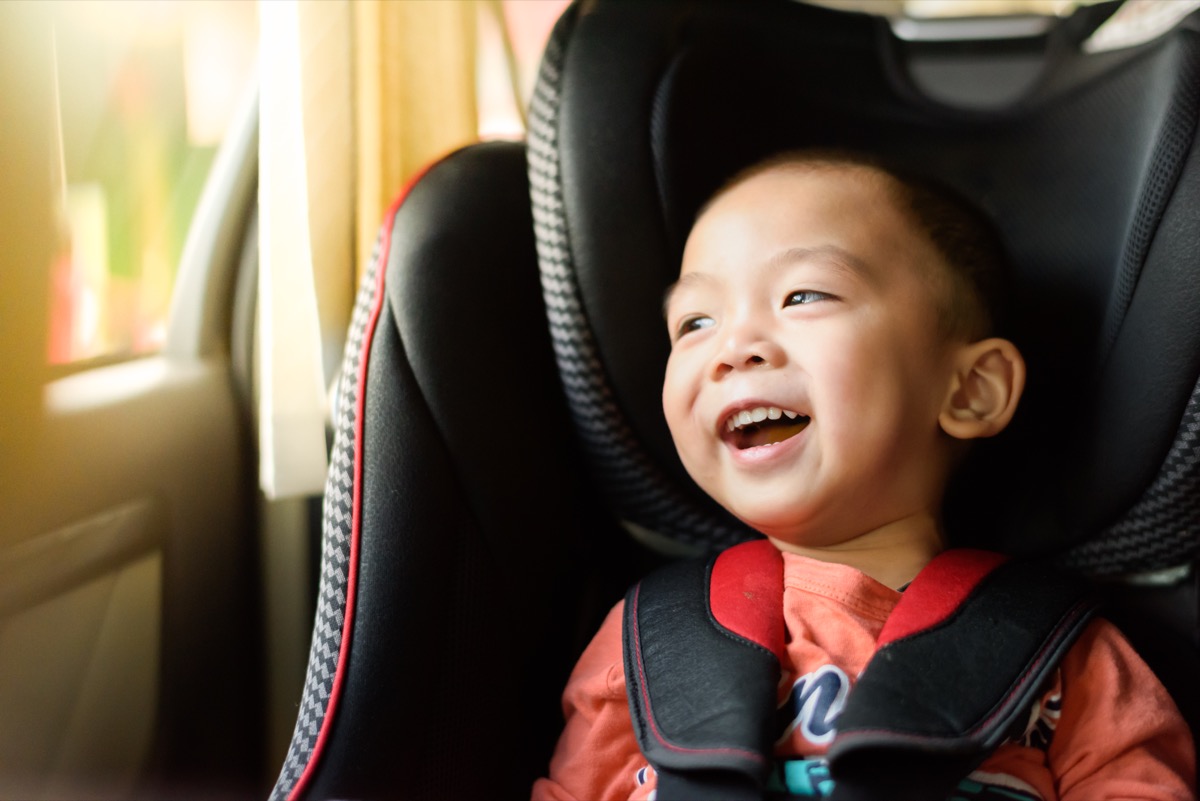
Car seats are non-negotiable for parents today. However, it wasn’t until 1985 that car seat laws were on the books in all 50 U.S states. So parents 50 years ago could—and often did—drive their toddlers around sans a secure seat.
27
First-time moms are older today.

According to the CDC, the average age of mothers at the time of their first birth was 21.4 in 1970; in 2016, the average age when most women had their first babies was 28. Perhaps more surprising? While the overall U.S. birthrate is on the decline, there’s one group with an uptick in births today: mothers over 40.
28
Parents are having fewer children in total.
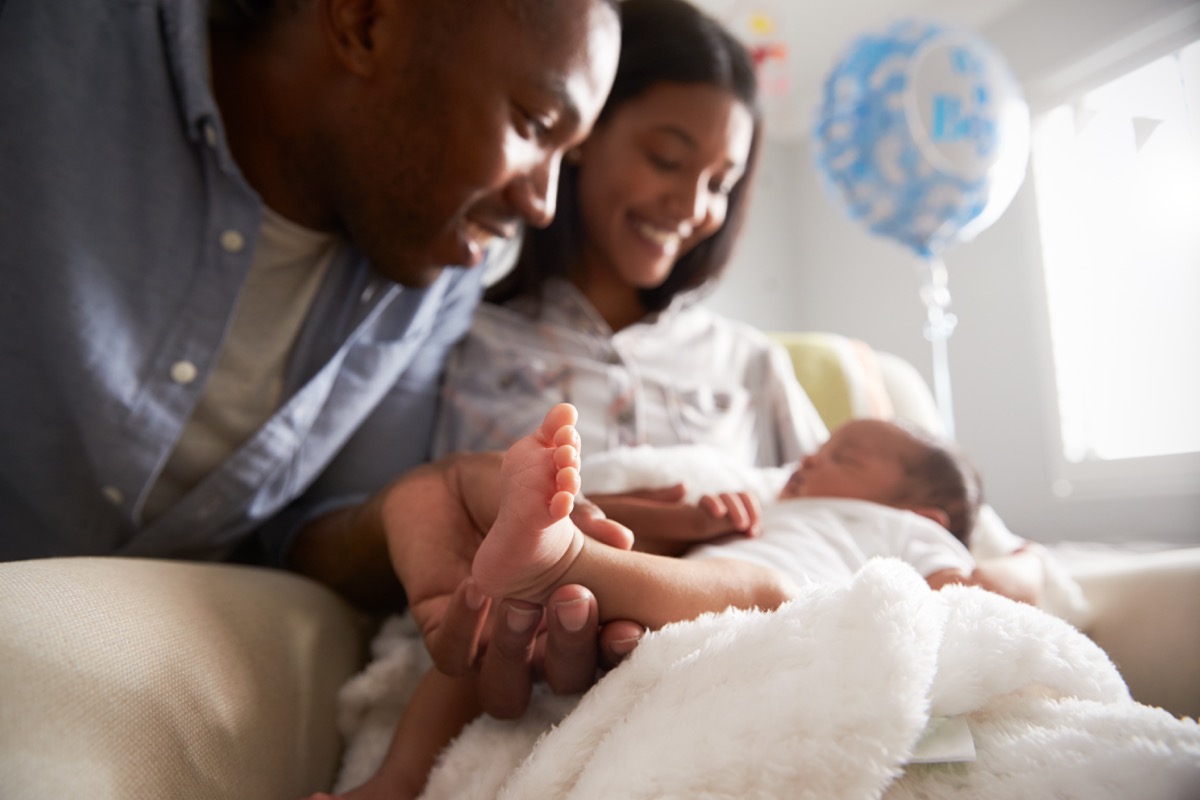
It might not have been a huge surprise to see families with four or five kids in the 1960s, but it certainly is not the norm today. According to Census data, in 1969, the average American household had 3.19 members; as of 2018, that was down to 2.53.
29
Fewer parents spank their children today.
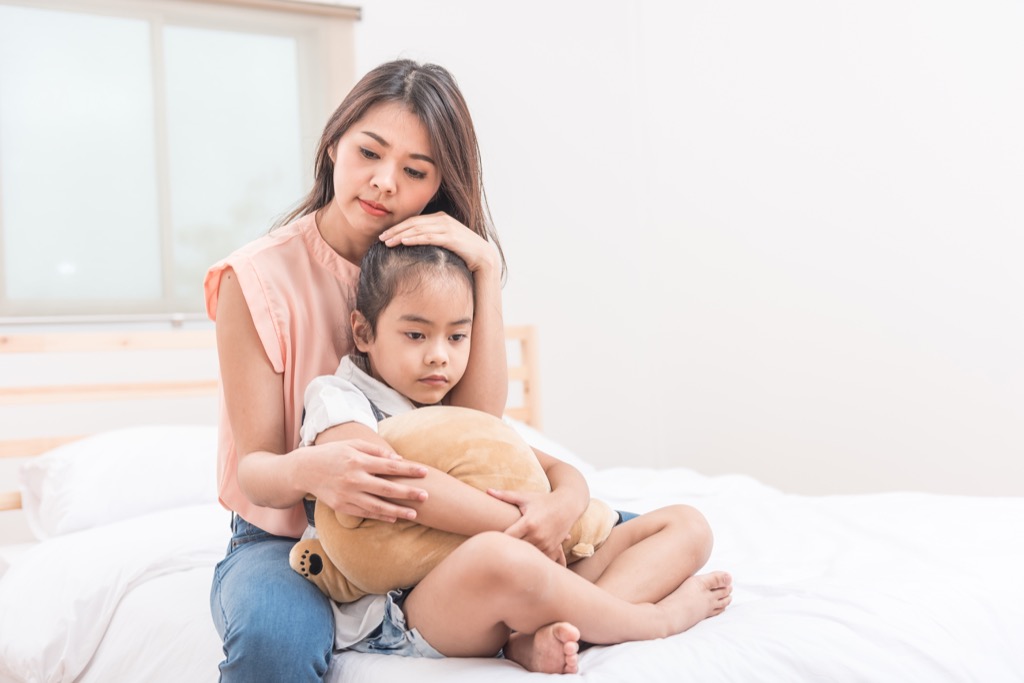
Ask many parents today if they spank their children and you’ll be met with horrified looks. While corporal punishment was once common, a 2016 review of research published in Pediatrics reveals that spanking has decreased among middle-income families in the past 30 years, while alternate punishments, like time outs, have been on the rise.
30
More families own their homes.

While the rate of homeownership has been on the decline since the 2000s, it’s still higher than it was 50 years ago. Census data from 2019 reveals that U.S. homeownership is at 64.2 percent—in 1970, it was at 62.9 percent.
31
Parents are more likely to get maternity and paternity leave than ever before.
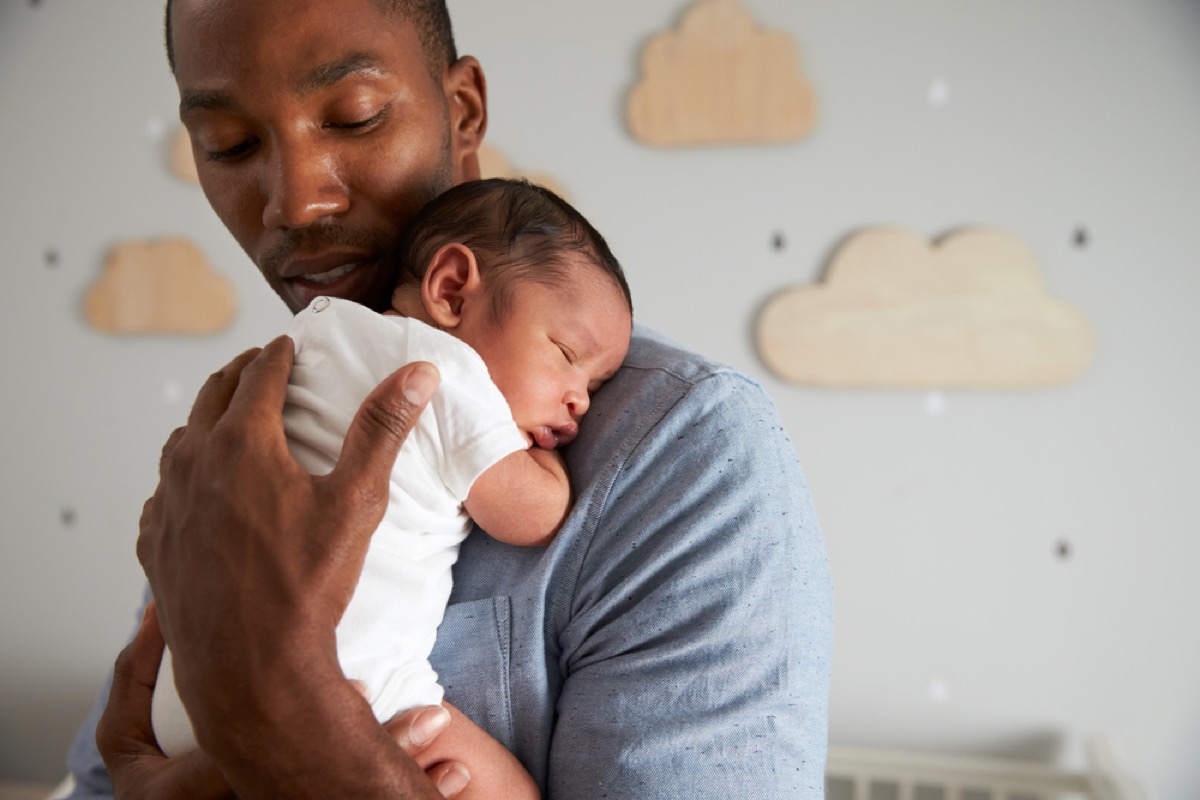
While maternity and paternity leave still aren’t guaranteed to every parent in the United States, significant progress has been made on that front, especially in recent years, however slow. For example, California became the first state to offer paid leave to both mothers and fathers in just 2002.
32
Education is significantly more expensive.

While some expenses associated with child-rearing have improved over the years, others have gotten significantly worse. For instance, according to the United States Department of Agriculture (USDA)’s 2015 “Expenditures on Children by Families” report, approximately 16 percent of all the money that parents spent on their children through age 17 went toward child care and education. That’s a far cry from the 1960s, when this same sector accounted for just 2 percent of spending.
33
So fewer parents are sending their kids to private schools.

As education gets more expensive, the number of kids going to private schools is dropping significantly, too. In fact, the number of children in middle-class homes attending private school was down nearly 50 percent between 1968 and 2013, according to data from the U.S. Census and the Current Population Survey.
34
Health care costs are higher, too.

Education and child care aren’t the only things hogging parents’ hard-earned money. According to the same 2015 USDA report, 9 percent of all the money spent on children up until their 18th birthday goes toward health care, up from 4 percent in 1960. Even just between 2014 and 2015, health care-related expenses rose an average of $115.
35
Parents are more worried about their kids’ safety at school.

The sharp uptick in school shootings in recent years has given parents significant cause for concern. In a 2018 Gallup poll, 35 percent of parents surveyed said they were fearful of their child’s safety in school, up 11 percent from just one year prior.
36
They rely on the internet for advice.
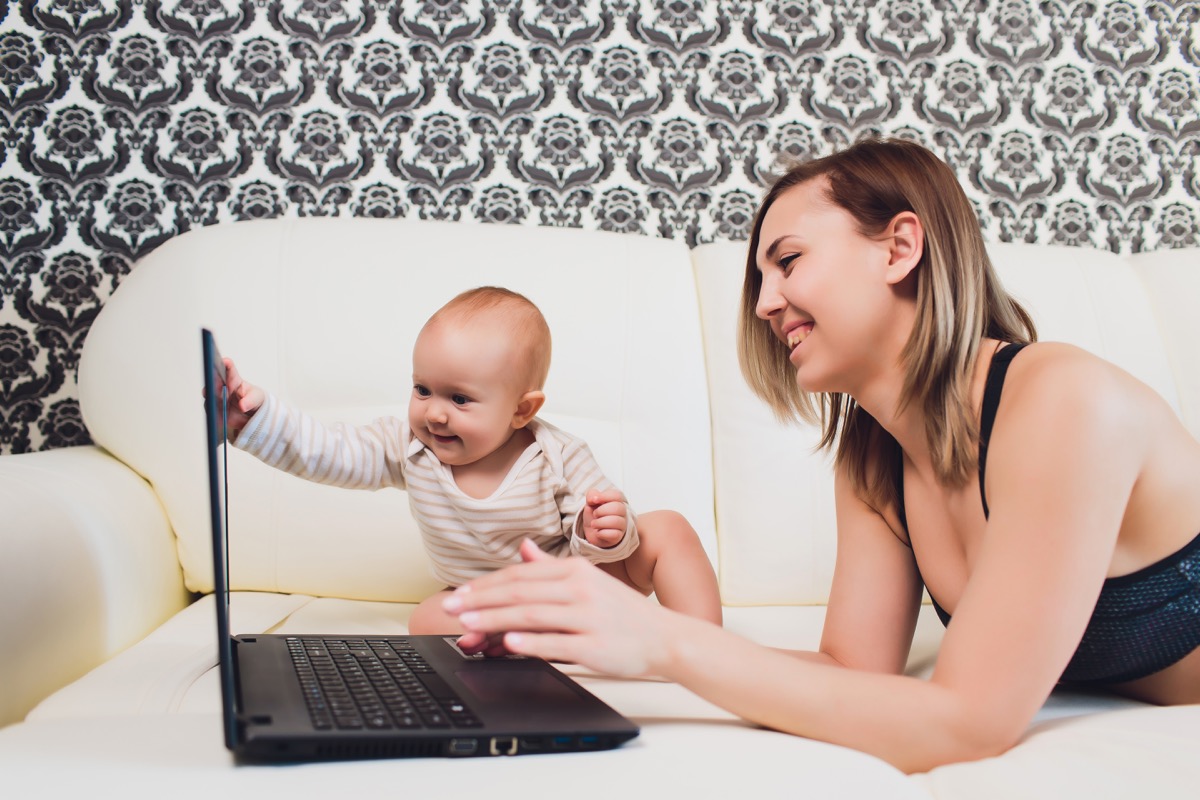
Though social media and the internet have made parenting more difficult in a myriad of ways, they can also come in handy. In fact, one 2015 survey from the Pew Research Center found that 43 percent of moms and 23 percent of dads used parenting websites to obtain advice on how best to raise their children. Thanks, internet!
37
Kids do their homework on the computer.
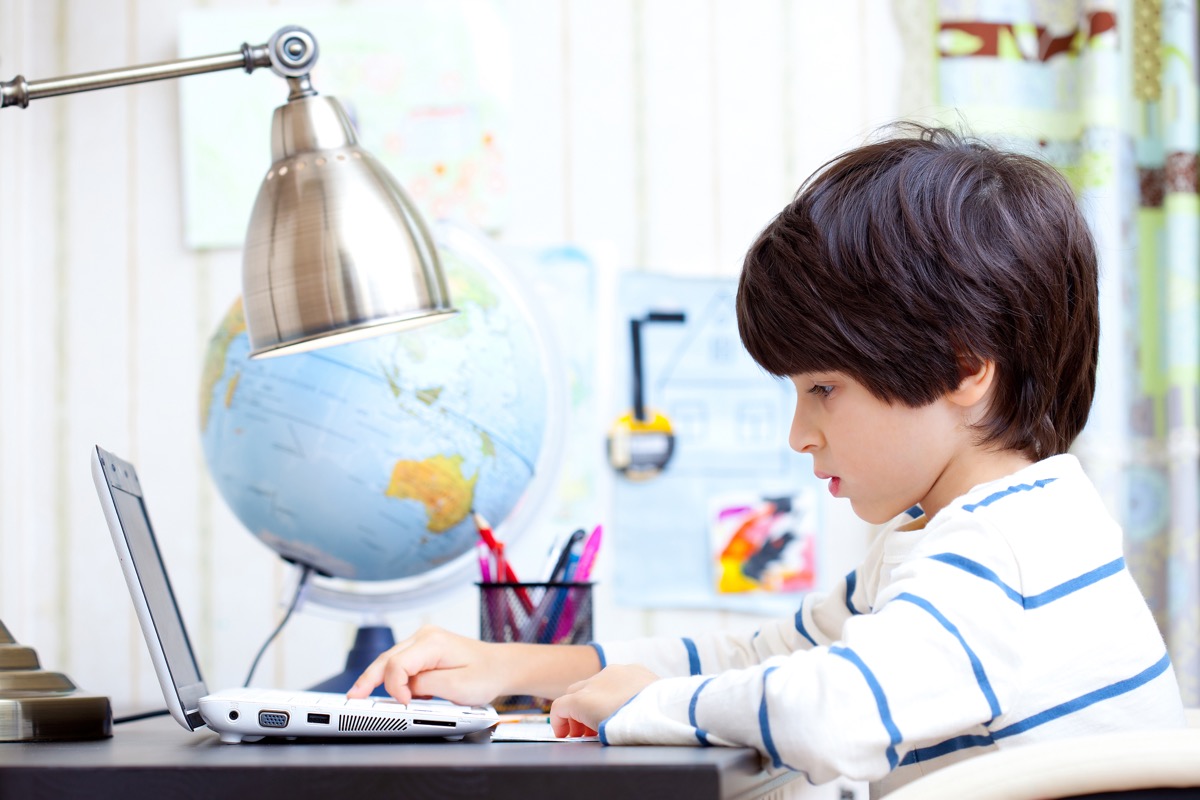
Most kids these days know little to nothing about the Dewey Decimal System—and that’s because they don’t have to. Students hardly need encyclopedias and hardcover textbooks in order to get their work done; they have tutors, study guides, and fellow students at their fingertips online.
Even in classroom settings, books are being eschewed in favor of tablets and laptops; in one 2015 study from the Family Online Safety Institute, 98.5 percent of students reported using the internet during school, and 96.5 percent noted that they needed it in order to complete their homework.
38
Parents are giving young children more screen time.
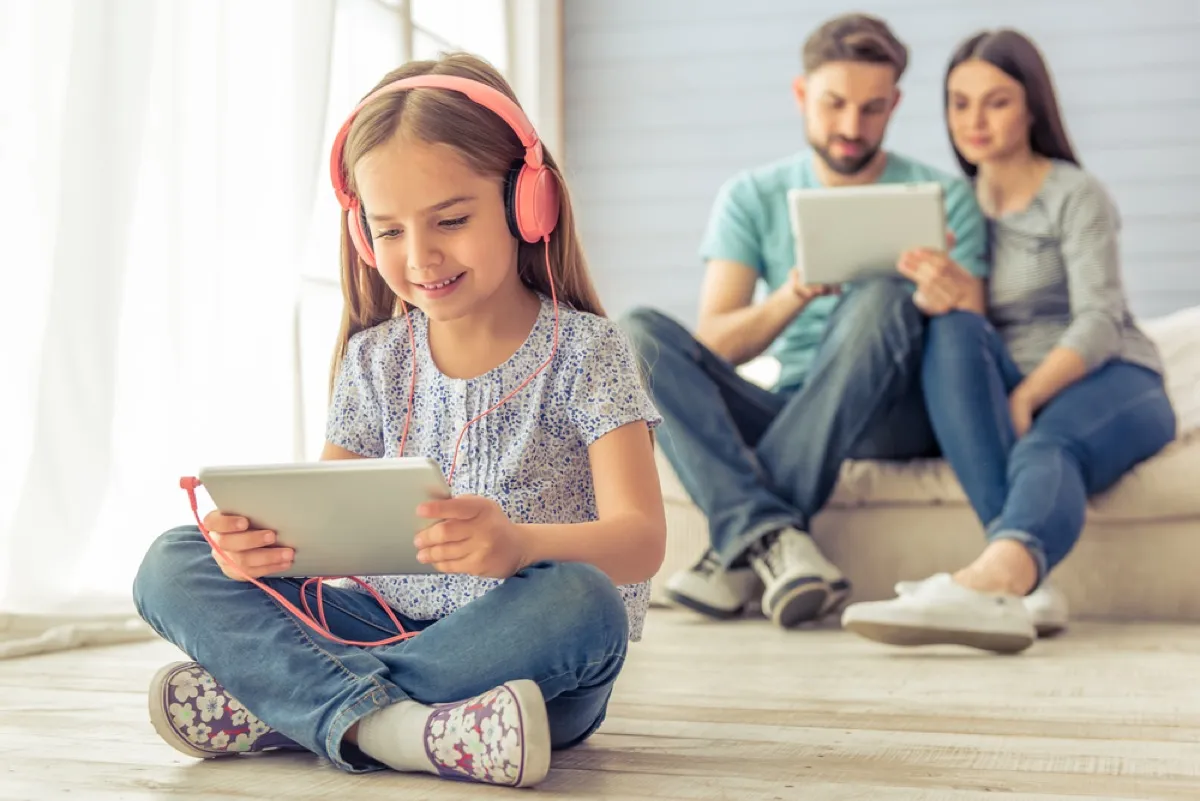
While tablets, laptops, and smartphones were non-existent 50 years ago, today they’re frequently used by kids who aren’t even old enough to say their own names. In fact, according to a 2019 report in JAMA Pediatrics, young kids are getting significantly more screen time today than they were just over 20 years ago. In 1997, kids two and under were getting an average of 1.3 hours of screen time a day; today, that same demographic is getting some 3 hours.
39
And they face more digital distractions themselves.
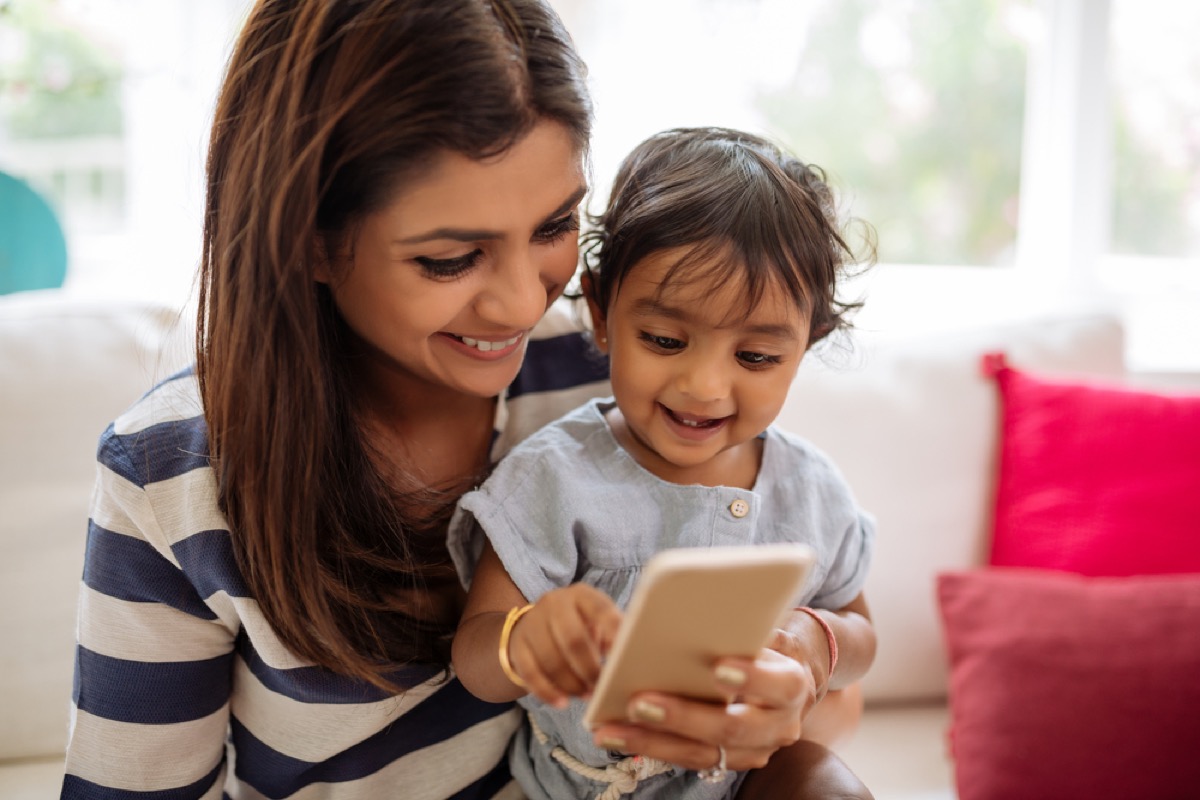
While parents didn’t have cell phones to distract them 50 years ago, moms and dads are frequently pulling out their devices to entertain themselves while taking care of their kids today. Unfortunately, though, they may be doing so to their child’s detriment: A 2016 review of research published in the journal Developmental Science found that young children whose mothers were distracted by devices displayed less positive affect when played with and were less likely to explore their environment.
40
Today’s family photos are stored digitally, instead of in albums.

In 1969, a child’s biggest photo-related concern was that their parents might hang that awkward family photo above the fireplace mantle. In 2019, however, kids have a whole new set of worries regarding their parents’ preferred means of sharing family photos: namely that they’ll become memes.
41
Parents have to worry about cyberbullying.
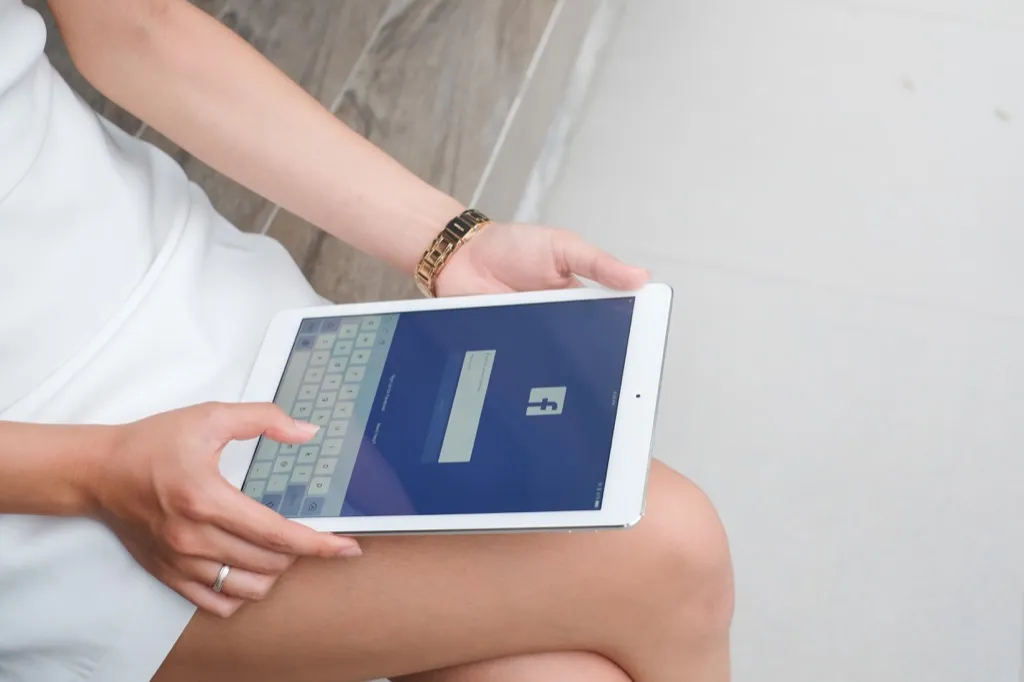
Social media didn’t become a significant parental concern until the turn of the century. While a mom or dad’s biggest concern in the 1950s was whether their daughter was necking her boyfriend at the drive-in, today’s parents have to worry about cyberbullying, scammers, and all of the harmful mental and emotional side effects of social media overload.
In fact, a 2018 report from the Pew Research Center found that 65 percent of parents worry about how much time their child spends in front of a screen. And it’s a valid concern: In another 2018 Pew Research Center study, 59 percent of teenagers reported having been cyberbullied at some point.
42
And they have more concerns about their kids’ online privacy.

With the rise of social media in the past few decades, parents now have concerns about their children’s privacy that simply didn’t exist 50 years ago. In a 2012 report from Harvard’s Berkman Klein Center for Internet & Society, 81 percent of parents with teenagers expressed concern about how much advertisers could glean about their children online; 72 percent had worries about them interacting with strangers online; and 69 percent worried that their online behavior might hinder their academic or career opportunities in the future.
43
Parents today are more involved with their kids.
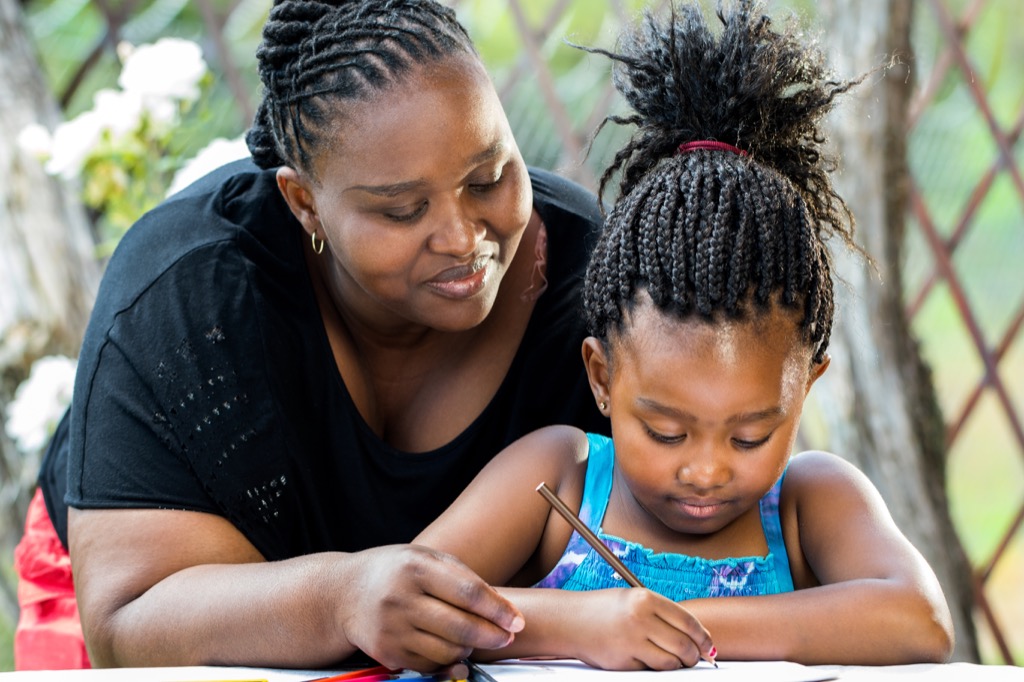
In 1965, moms spent 10 hours on child care and dads spent just 2.5 hours looking after their kids each week. By 2016, those numbers had jumped to 14 hours and 8 hours, respectively, according to a 2009 study published in the American Journal of Sociology and research from the Pew Research Center. In fact, many early 20th century parenting books claimed that too much time spent with kids or affection shown toward them would hinder their development and make them “soft.”
44
But they’re also more concerned about being too involved.
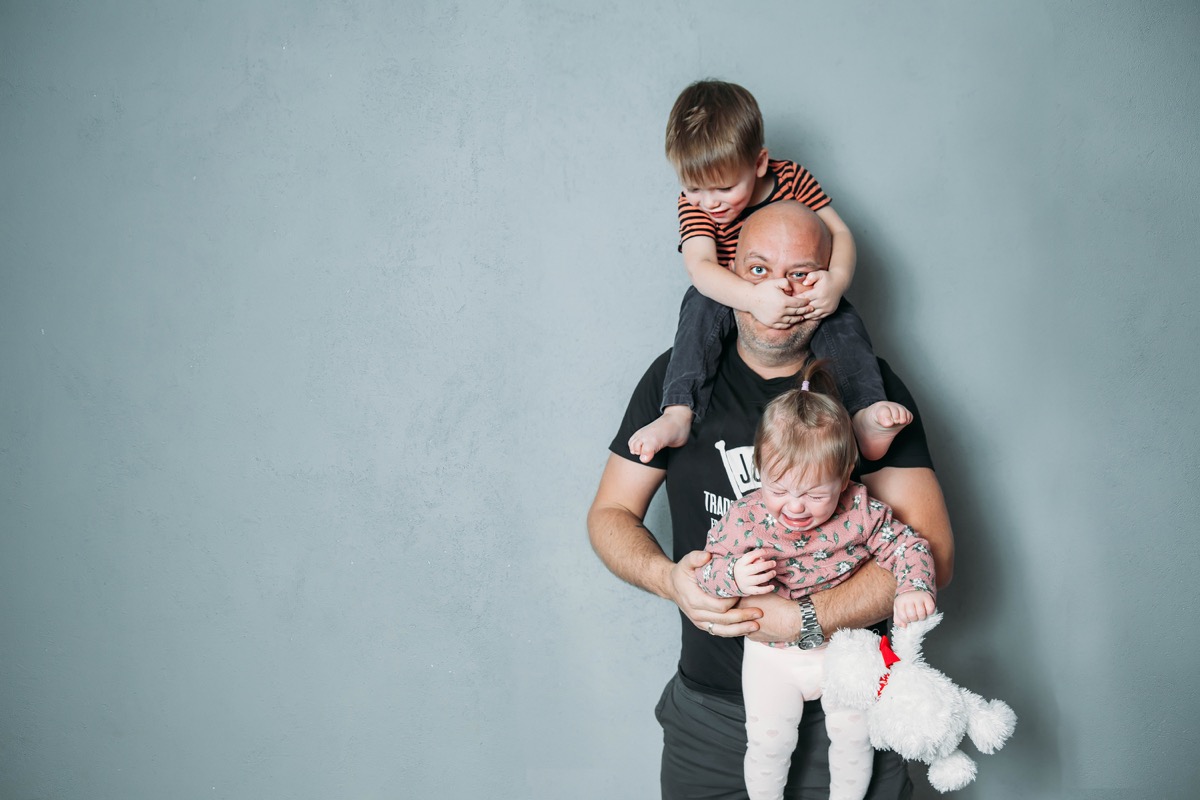
Though warmth and affection are no longer seen as stepping stones on the road to weakness and dependence later in life, many parents today have new concerns related to their closeness to their children: that they’ll become so-called “helicopter parents.” According to 2015 data from the Pew Research Center, 43 percent of American parents polled said too much parental involvement in their kids’ academics could be a bad thing—advice Lori Loughlin and Felicity Huffman would have been wise to heed.
45
Contemporary parents can find a babysitter with the tap of a screen.
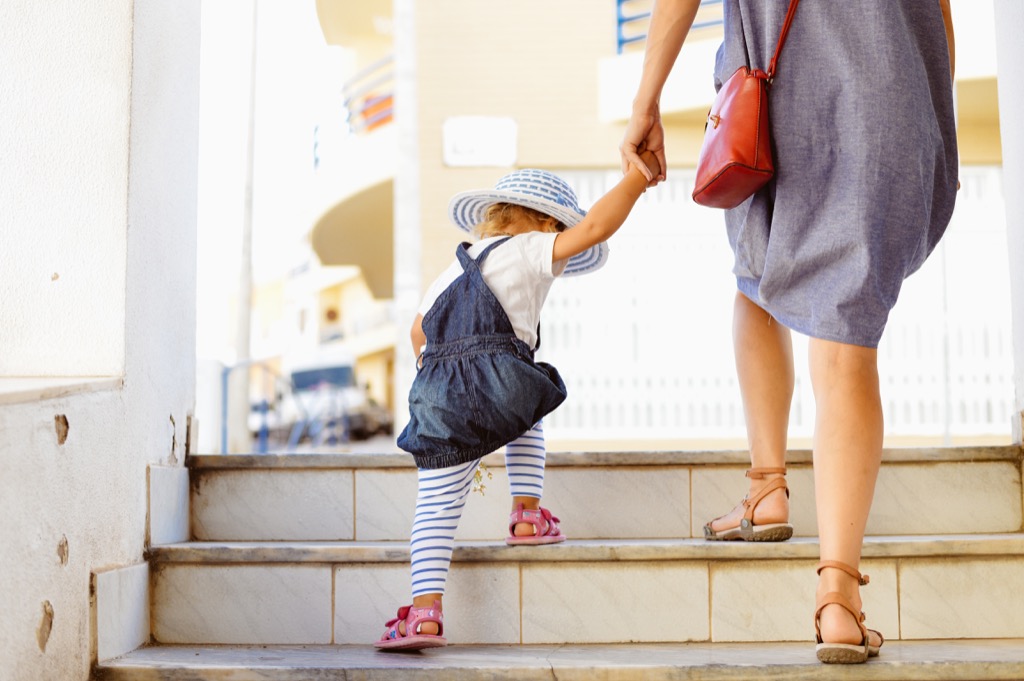
Looking for someone to watch your kids for a few hours for date night used to mean calling up your friends’ teenagers and hoping one of them was free. Today, sites like Care.com make it possible for parents to find babysitters—and even get background checks on them—in just seconds.
46
More moms are breadwinners today.

While dads typically brought home the bacon 50 years ago, today there are more female breadwinners in the United States than ever. According to the Pew Research Center, while just 7 percent of women earned more money than their male spouse in 1960, that number had reached 40 percent by 2014.
47
More things are pre-safety proofed now.

Fifty years ago, if you wanted to keep your kids from getting into your bottle of aspirin or antibiotics, you’d simply put them on a high shelf or behind a locked door and hope for the best. It wasn’t until the Poison Prevention Packaging Act of 1970 that child-proof packaging became a requirement for potentially-dangerous prescriptions and OTC medications.
48
Fewer parents are teaching their kids to drive.

Learning to drive used to be a rite of passage for teenagers, with mom or dad hopping in the passenger seat and screaming “Brake!” every minute or so as you cruised around the neighborhood. However, it appears that fewer teenagers as getting behind the wheel nowadays. According to a 2016 report from the University of Michigan Transportation Research Institute, approximately 25 percent of 16-year-olds had driver’s licenses in 2014, down from 46 percent in 1984.
49
More grandparents are raising their grandkids.
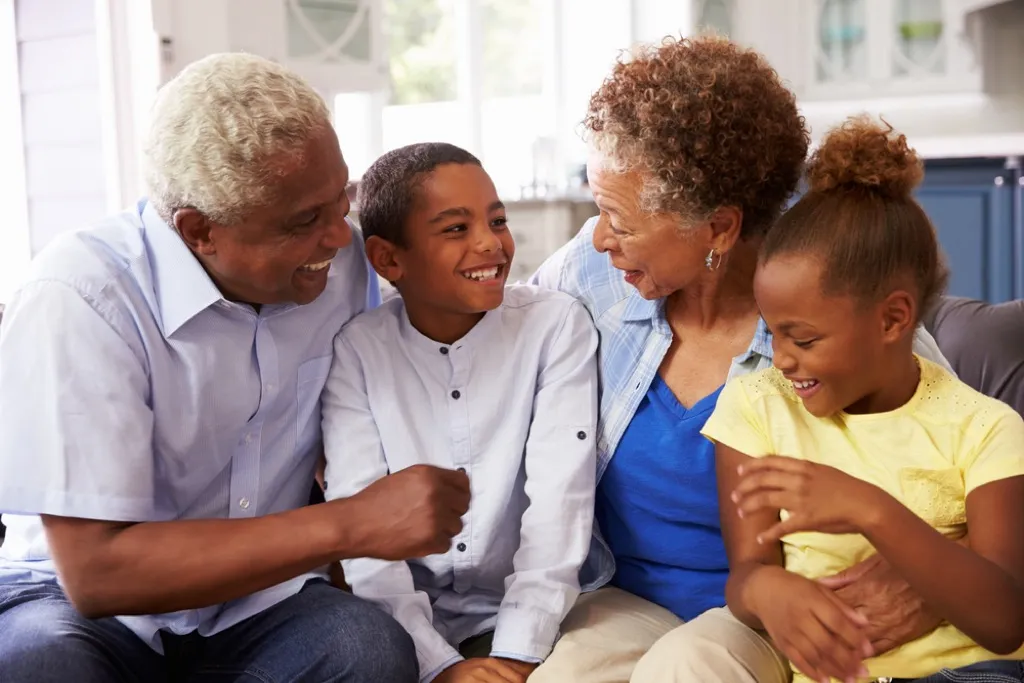
More grandparents are finding themselves once again in caregiver roles today than ever before. According to a 2006 report published in the journal Family Relations, the number of grandparents raising their grandchildren has doubled since 1970.
50
And more parents are being cared for by their adult children later in life.
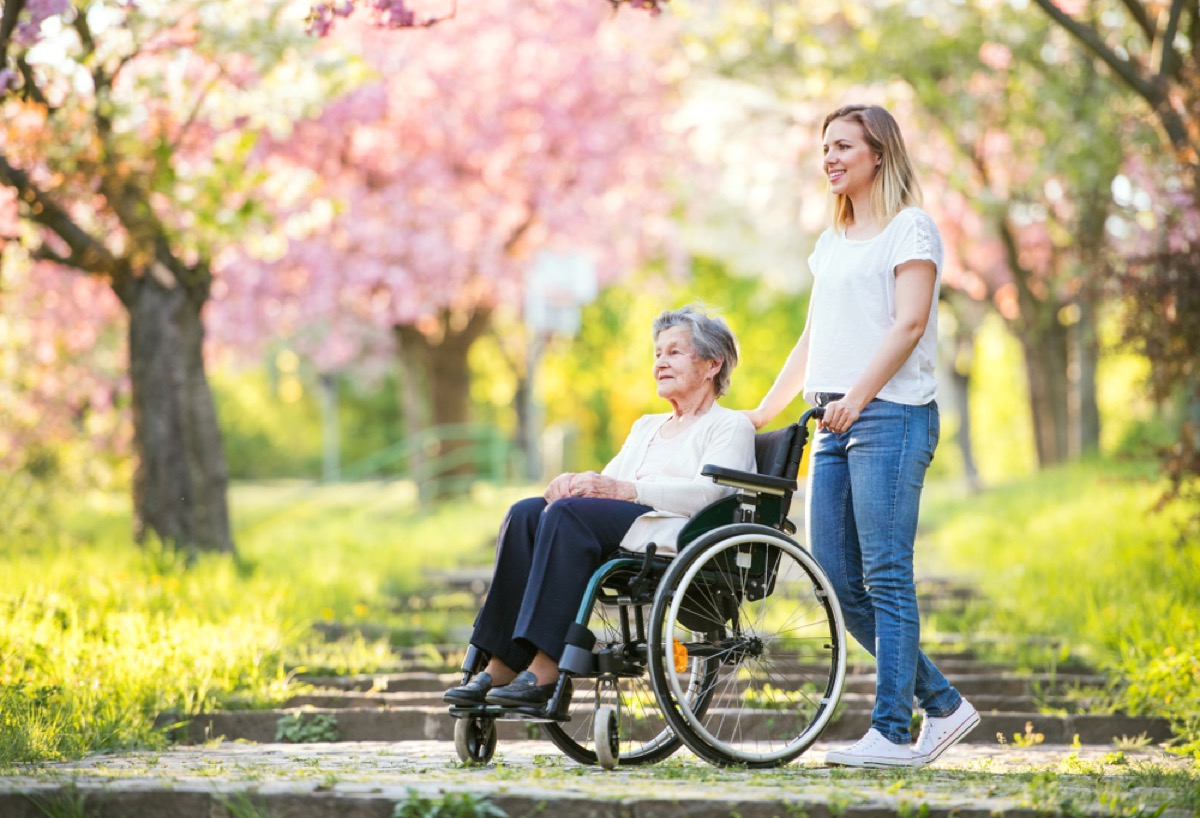
Americans are living longer than ever—up to 78.6 years in 2017 from just 70.5 years in 1969, according to the CDC. As such, many adult children are taking on a new role in their parents’ lives as caregivers. In a 2018 report from the Pew Research Center, 12 percent of U.S. parents said that they were now caring for an adult family member as well. And if you want to raise happy, healthy children, discover these 40 Parenting Hacks for Raising an Amazing Kid.
To discover more amazing secrets about living your best life, click here to follow us on Instagram!